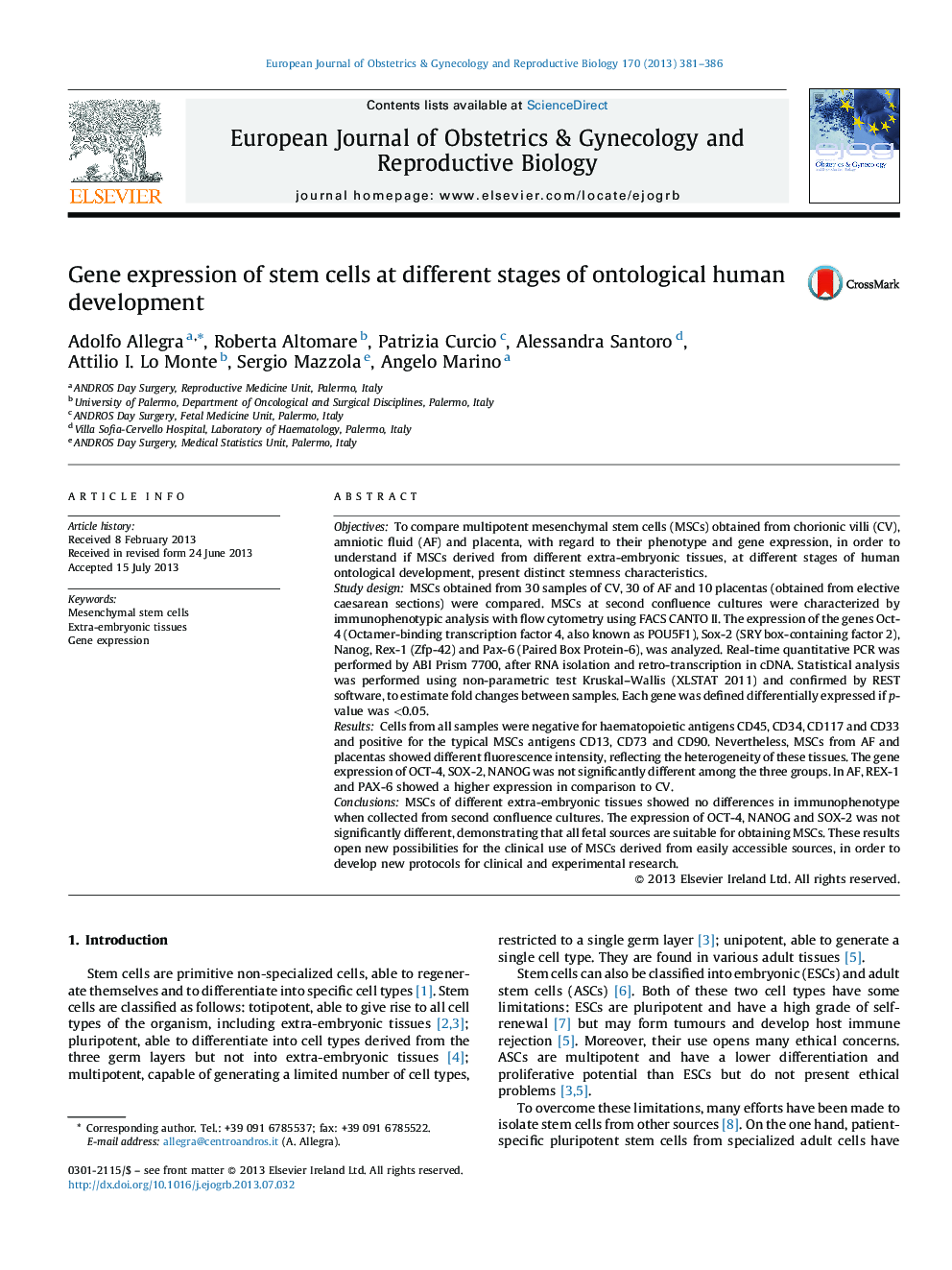| کد مقاله | کد نشریه | سال انتشار | مقاله انگلیسی | نسخه تمام متن |
|---|---|---|---|---|
| 6174067 | 1599812 | 2013 | 6 صفحه PDF | دانلود رایگان |
ObjectivesTo compare multipotent mesenchymal stem cells (MSCs) obtained from chorionic villi (CV), amniotic fluid (AF) and placenta, with regard to their phenotype and gene expression, in order to understand if MSCs derived from different extra-embryonic tissues, at different stages of human ontological development, present distinct stemness characteristics.Study designMSCs obtained from 30 samples of CV, 30 of AF and 10 placentas (obtained from elective caesarean sections) were compared. MSCs at second confluence cultures were characterized by immunophenotypic analysis with flow cytometry using FACS CANTO II. The expression of the genes Oct-4 (Octamer-binding transcription factor 4, also known as POU5F1), Sox-2 (SRY box-containing factor 2), Nanog, Rex-1 (Zfp-42) and Pax-6 (Paired Box Protein-6), was analyzed. Real-time quantitative PCR was performed by ABI Prism 7700, after RNA isolation and retro-transcription in cDNA. Statistical analysis was performed using non-parametric test Kruskal-Wallis (XLSTAT 2011) and confirmed by REST software, to estimate fold changes between samples. Each gene was defined differentially expressed if p-value was <0.05.ResultsCells from all samples were negative for haematopoietic antigens CD45, CD34, CD117 and CD33 and positive for the typical MSCs antigens CD13, CD73 and CD90. Nevertheless, MSCs from AF and placentas showed different fluorescence intensity, reflecting the heterogeneity of these tissues. The gene expression of OCT-4, SOX-2, NANOG was not significantly different among the three groups. In AF, REX-1 and PAX-6 showed a higher expression in comparison to CV.ConclusionsMSCs of different extra-embryonic tissues showed no differences in immunophenotype when collected from second confluence cultures. The expression of OCT-4, NANOG and SOX-2 was not significantly different, demonstrating that all fetal sources are suitable for obtaining MSCs. These results open new possibilities for the clinical use of MSCs derived from easily accessible sources, in order to develop new protocols for clinical and experimental research.
Journal: European Journal of Obstetrics & Gynecology and Reproductive Biology - Volume 170, Issue 2, October 2013, Pages 381-386
